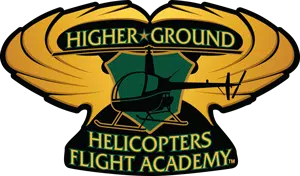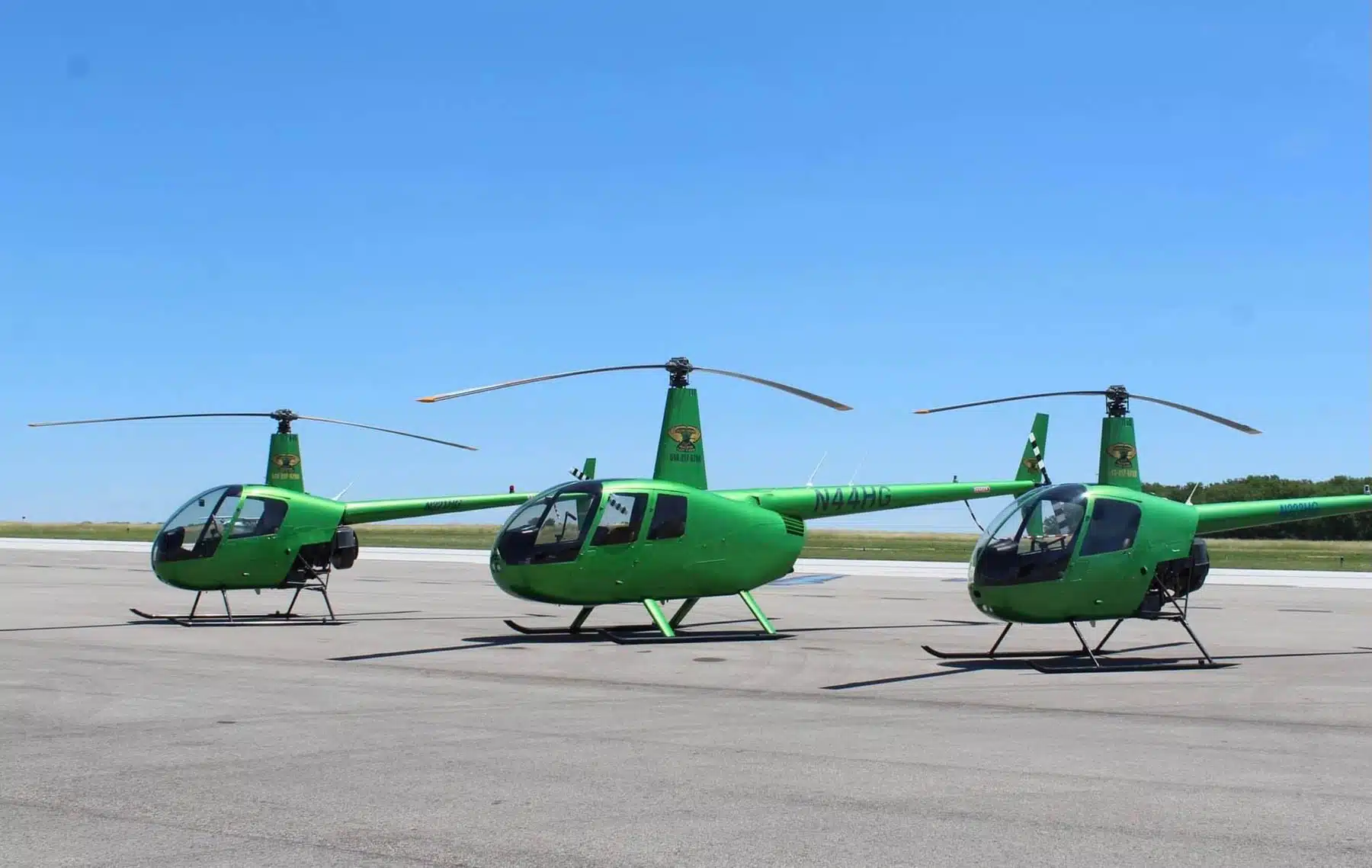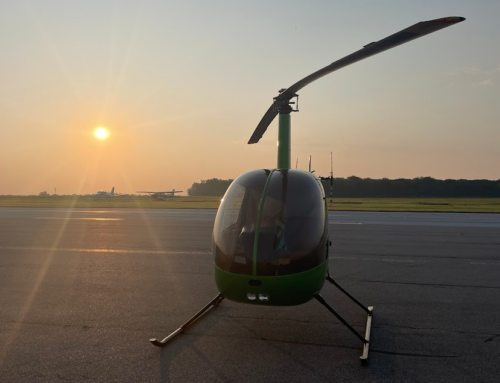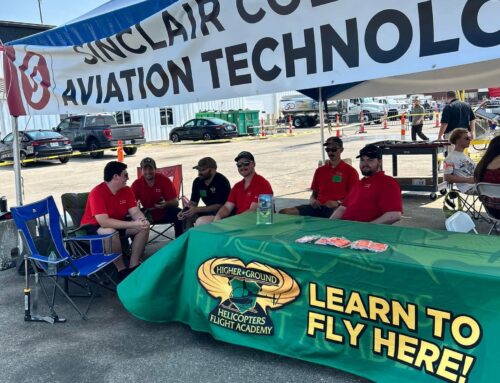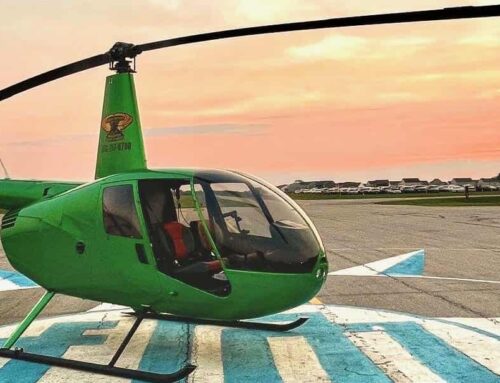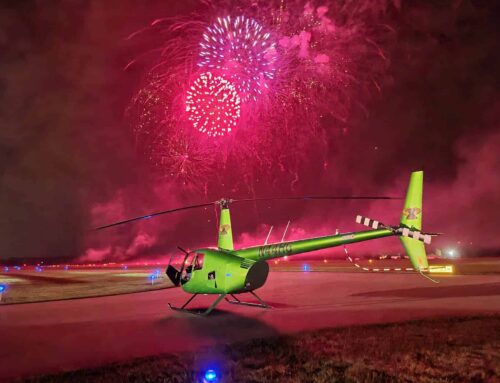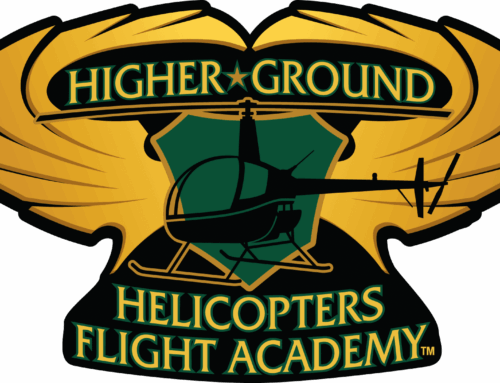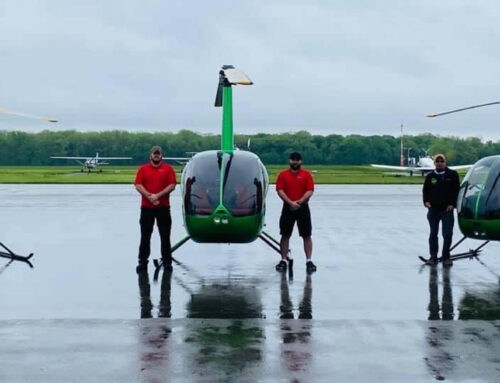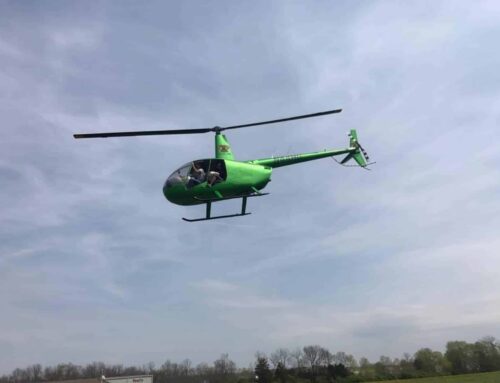The Bureau of Labor Statistics (BLS) projects a 5% job growth rate for pilots between 2023 and 2033. The aviation world is buzzing with opportunity, and helicopter pilots are at the center of it all.
This may be your invitation to take to the skies in a helicopter. It’s one of aviation’s most exciting and in-demand fields. If you’re interested in conquering the skies, helicopter flying lessons may be your gateway to an exciting career adventure.
Starting your journey with helicopter flying lessons is very easy. Below is an actionable guide to help you start.
Step 1: Research and Choose a Reputable Helicopter Flight School
Look for a quality helicopter flight school that is FAA-approved. They should have experienced instructors and offer modern training aircraft. For instance, HG Helicopters is a Part 141 flight academy with veteran-friendly programs and all-inclusive packages for every level of pilot.
Step 2: Schedule an Introductory Helicopter Lesson
Start with introductory helicopter lessons. This is often known as a discovery flight. During this session, you’ll:
- Meet your instructor
- Get a hands-on intro to the controls
- Experience the thrill of flight for yourself
It’s the perfect way to decide if learning to fly is right for you. You’ll leave with a new perspective on what it means to pilot a helicopter. This initial experience can be the start of an exciting, lifelong passion in aviation.
Step 3: Meet Basic Requirements
To enroll in helicopter training programs, you need to meet several requirements. These include:
- Be at least 17 years old for a Private Pilot Certificate
- Hold a valid driver’s license or medical certificate
- Be able to speak, read, and understand English
Some helicopter flying schools may have additional enrollment requirements. Ensure you check with your chosen provider to stay on track.
Step 4: Enroll and Choose Your Training Program
Ensure you select a program that aligns with your ambitions. Some options to choose from include:
- Private pilot certificate
- Instrument rating
- Commercial pilot certificate
- Certified flight instructor (CFI)
- Complete professional helicopter career program
A structured helicopter training program helps you build flight hours and learn aviation theory. You can also start mastering practical skills in stages.
Step 5: Apply for Financial Aid and Benefits
A lot of flight schools-including HG Helicopters-support veterans with VA benefits that can cover up to 100% of tuition for qualifying students. You can also explore traditional student loans, scholarships, and payment plans depending on your eligibility.
Step 6: Start Ground School and Simulator Training
Ground school covers various important subjects. They include:
- Aerodynamics
- Navigation
- Meteorology
- Safety procedures
- Regulations
Many programs blend classroom, online, and simulator-based learning so you can study at your own pace.
Step 7: Start Hands-On Flight Training
Once you’re done with the theory aspects, you can start logging flight hours with your instructor. Early lessons focus on fundamentals like:
- Hovering, takeoff, and landing
- Basic maneuvers
- Airspace rules and emergency procedures
You can progress from dual instruction to solo flights as confidence and skills build. Each flight session will bring you closer to mastering the essentials of safe helicopter operation.
Step 8: Complete Written Exams and Checkrides
The process ends in an FAA written knowledge test and a practical “checkride” with an examiner. Completing these steps earns you your certificate and a helicopter pilot license and moves you forward on the career ladder of helicopter pilot training.
Helicopter Pilot Ratings to Launch Your Aviation Career
Each step you take in helicopter pilot training unlocks a new rating. This means you get to earn new skills and privileges. Here’s a quick guide to the ratings you’ll encounter in a professional helicopter training program.
Private Rating
With helicopter training programs at Higher Ground Helicopters, you start from zero and build up your skills methodically. The private rating phase focuses on the essentials:
- 50 hours total helicopter time (40 dual, 10 solo)
- Ground training and flight theory
- Final checkride with a qualified examiner
You’ll cover everything from basic aerodynamics to safely handling helicopters like the Robinson R22 and R44. Once you complete this rating, you can act as pilot-in-command and carry passengers for recreational purposes. However, you can’t be paid for flying or carrying passengers or cargo for compensation.
Instrument Rating
The instrument rating adds another layer of safety and skill. When you get this rating, you can fly by reference to instruments that are important when flying in low-visibility weather.
It allows you to fly safely in clouds or where there is poor visibility. Additionally, you can boost your employability by meeting insurance and job requirements.
Commercial Ratings
Once you master the fundamentals, you only go higher. The commercial rating sets you up to fly for hire, featuring:
- 100 hours total helicopter time (90 dual, 10 solo, 10 instrument)
- Advanced ground and flight courses
- Required FAA written and practical exams
Helicopter flight school at HG Helicopters ensures you’re flight-ready for actual jobs. Once you’re done, you can get paid to fly for hire in a lot of industries, such as tours or medical services.
Certified Flight Instructor (CFI) Rating
Want to earn while you log flight hours and help others learn to fly helicopters? The CFI Rating is the next step. The CFI program needs 50 hours of helicopter time (40 dual, 10 solo), plus ground courses and multiple written exams. This rating allows you to:
- Teach students in the cockpit
- Conduct flight reviews
- Sign off on student solo flights
You cannot instruct for compensation unless you hold this rating. Most new commercial pilots start as flight instructors to build hours and job experience in helicopter training programs quickly.
Airline Transport Pilot (ATP) Rating
The ATP is the highest pilot credential in the U.S. It’s required for high-level jobs like corporate transport or piloting for a scheduled carrier. Some requirements include:
- More flight time (often 1,200+ hours total)
- Advanced knowledge
- Rigorous checkrides
With the ATP, you get to captain aircraft for airlines and large-scale commercial operations. However, it demands a lot of flight experience and regular medical exams.
Helicopter Training Programs: What Sets HG Helicopters Apart?
Choosing a good school for your helicopter training is important. Here are reasons why you should pick HG helicopters:
Safety First, Always
Your safety is our priority. We fly the trusted Robinson family of helicopters-especially the R22 and R44. These helicopters are not only efficient but also lead in safety ratings for training aircraft.
Flexible Training Programs for All Schedules
HG Helicopters offers flight training options tailored for both full-time students and working adults. Whether you’re starting fresh or pursuing another career, you can find programs that fit into your lifestyle. It allows you to progress at your own pace.
Financial Aid and Veteran Support
As a Part 141 helicopter flight school approved by the Veterans Administration, HG Helicopters welcomes veterans and offers financial aid options. We assist veterans transition into civilian aviation careers with the support they’ve earned.
Career Opportunities After Helicopter Training
According to ZipRecruiter, the average annual salary for a helicopter pilot in the U.S. is about $100,249. Earning your pilot certifications through helicopter training programs is a rewarding and high-demand career path.
You can get career options in:
- Emergency medical services (EMS): Transport patients and support rapid medical response
- Law enforcement: Help police departments with search and rescue operations
- Corporate aviation: Offer safe, efficient VIP transport for business executives and other high-profile clients
- Tourism and sightseeing: Showcase cityscapes, mountains, and coastlines to tourists from the sky
- Flight instruction: Train the next generation to learn to fly helicopters
No matter which path you choose, a career after graduating from a helicopter flight school is an adventure.
The Costs of Helicopter Training
Learning to fly a helicopter is thrilling. However, it’s a huge investment. The costs vary depending on the flight school and location.
Here’s a clear breakdown of some of the expenses you can expect as you learn to fly helicopters.
Tuition Fees
These cover ground school, classroom instruction, training materials, and administrative costs. Tuition can range from $3,000 to $7,000, depending on the program’s length and depth.
Aircraft Rental and Fuel Costs
Most of your fees will go to aircraft rental and fuel. Hourly rates for renting training helicopters like the Robinson R22 or R44 often range from $150 to $200 per flight hour. A lesson can last one to two hours, including pre-and post-flight briefings.
Exam and Checkride Fees
Expect extra costs for FAA written exams and practical checkrides. Written tests can cost around $150, while flight examiners charge separately for the checkride. You can expect to pay $400 to $600, depending on location.
Additional Training Costs
You may also need to budget for flight gear like headsets, training software, or supplemental materials. Budget accordingly for these additional costs.
Enroll in Helicopter Flying Lessons Today
The sky isn’t the limit. It’s your new office. With the helicopter industry facing a pilot shortage, this is the time to start your helicopter flying lessons.
At Higher Ground Helicopters, we’re here to help you launch your career. Our Part 141 certification and partnership with Sinclair Community College mean you receive training that exceeds industry standards while earning college credit toward your degree. We hold evening ground school sessions from 6:00 PM to 10:00 PM, allowing you to keep your full-time job while pursuing your aviation dreams.
Contact us today to start your helicopter lessons.
